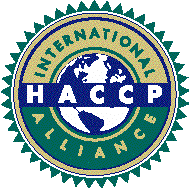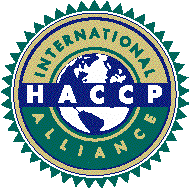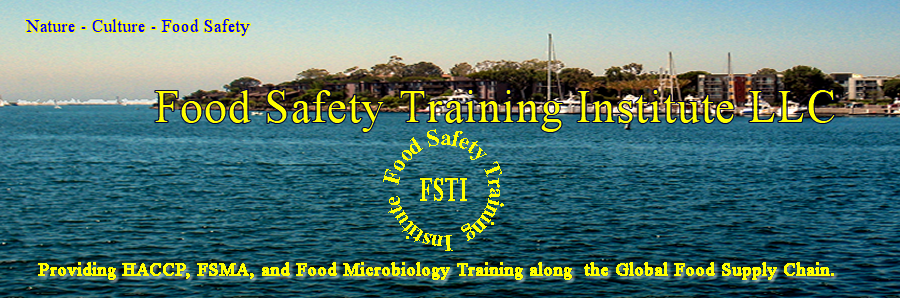
Option One
On Zoom
Instructor-Led
Please contact Alex to arrange Zoom Classes
Table of Contents
Module 1. Introduction to Statistical Process Control, HACCP and FSMA
Module 2. Descriptive Statistics
Module 3. Inferential Statistics
Module 4. Probability
Module 5. Exploratory Statistics
Module 6. Geostatistics
Module 7. Statistical and Statistical Process Control (SPC) Software
Module 8. Six Sigma, Lean Six Sigma, Check Sheet and Food Processing
Module 9. Artificial Intelligence and Statistical Process Control
Module 10. Using Pareto Charts for Quality and Safety
Module 11. Histograms, Normal Distribution and other Charts
Module 12. Control Charts
Module 13. Scatter Plots and Correlation Coefficients
Module 14. Stratification Tools
Module 15. Ishikawa Diagram (Cause and Effect Diagram)
Module 16. The Failure Effects Mode Analysts ( FEMA)
Module 17. Hypothesis and Hypothesis Testing
Module 18. Process Mapping and Value Stream Mapping (VSM)
Module 19. Quality Control and Six Sigma
Module 20. Test Statistics
Module 21. Prerequisite Programs
Module 22. Preliminary Steps
Module 23. Food Safety Hazards
Module 24. Conduct Hazards Analysis
Module 25. Determine Critical Control Points
Module 26. Establish Critical Limits
Module 27. Establish Monitoring Procedures
Module 28. Establish Corrective Action procedures
Module 29. Establish Verification Procedures
Module 30. Establish Record-Keeping and Documentation Procedures
Module 31. Implement, maintain, and reassess HACCP plans and systems


Option Two
Self-Paced
To be
Completed in 60 Days
Table of Contents
Module 1. Introduction to Statistical Process Control, HACCP and FSMA
Module 2. Descriptive Statistics
Module 3. Inferential Statistics
Module 4. Probability
Module 5. Exploratory Statistics
Module 6. Geostatistics
Module 7. Statistical and Statistical Process Control (SPC) Software
Module 8. Six Sigma, Lean Six Sigma, Check Sheet and Food Processing
Module 9. Artificial Intelligence and Statistical Process Control
Module 10. Using Pareto Charts for Quality and Safety
Module 11. Histograms, Normal Distribution and other Charts
Module 12. Control Charts
Module 13. Scatter Plots and Correlation Coefficients
Module 14. Stratification Tools
Module 15. Ishikawa Diagram (Cause and Effect Diagram)
Module 16. The Failure Effects Mode Analysts ( FEMA)
Module 17. Hypothesis and Hypothesis Testing
Module 18. Process Mapping and Value Stream Mapping (VSM)
Module 19. Quality Control and Six Sigma
Module 20. Test Statistics
Module 21. Prerequisite Programs
Module 22. Preliminary Steps
Module 23. Food Safety Hazards
Module 24. Conduct Hazards Analysis
Module 25. Determine Critical Control Points
Module 26. Establish Critical Limits
Module 27. Establish Monitoring Procedures
Module 28. Establish Corrective Action procedures
Module 29. Establish Verification Procedures
Module 30. Establish Record-Keeping and Documentation Procedures
Module 31. Implement, maintain, and reassess HACCP plans and systems


Option Three
Onsite
Your Site or
Hermosa Beach, Los Angeles, California
Contact Alex to Arrange Classes
Table of Contents
Module 1. Introduction to Statistical Process Control, HACCP and FSMA
Module 2. Descriptive Statistics
Module 3. Inferential Statistics
Module 4. Probability
Module 5. Exploratory Statistics
Module 6. Geostatistics
Module 7. Statistical and Statistical Process Control (SPC) Software
Module 8. Six Sigma, Lean Six Sigma, Check Sheet and Food Processing
Module 9. Artificial Intelligence and Statistical Process Control
Module 10. Using Pareto Charts for Quality and Safety
Module 11. Histograms, Normal Distribution and other Charts
Module 12. Control Charts
Module 13. Scatter Plots and Correlation Coefficients
Module 14. Stratification Tools
Module 15. Ishikawa Diagram (Cause and Effect Diagram)
Module 16. The Failure Effects Mode Analysts ( FEMA)
Module 17. Hypothesis and Hypothesis Testing
Module 18. Process Mapping and Value Stream Mapping (VSM)
Module 19. Quality Control and Six Sigma
Module 20. Test Statistics
Module 21. Prerequisite Programs
Module 22. Preliminary Steps
Module 23. Food Safety Hazards
Module 24. Conduct Hazards Analysis
Module 25. Determine Critical Control Points
Module 26. Establish Critical Limits
Module 27. Establish Monitoring Procedures
Module 28. Establish Corrective Action procedures
Module 29. Establish Verification Procedures
Module 30. Establish Record-Keeping and Documentation Procedures
Module 31. Implement, maintain, and reassess HACCP plans and systems

The creation of a scientifically based Food Safety Management System called Hazard Analysis and Critical Control Points (HACCP) by The National Aeronautics and Space Administration (NASA) and others in 1960’s ushered a new era in food safety and quality. The Food Safety Modernization Act (FSMA) of 2011 expanded the concept to apply to other products. The HACCP system was designed for astronauts and now is globally recognized by governments, academia and industries. HACCP was created as a process centric system and from the beginning was a perfect system to apply statistical process control to eliminate, prevent or reduce deviation, faults, failure and variations. The National Advisory Committee on Microbiological Criteria for Foods (NACMCF), who wrote seven principles of HACCP, defines “Criterion as a requirement on which a judgement or decision can be based. Control is defined as (a) To manage the conditions of an operation to maintain compliance with established criteria. (b) The state where correct procedures are being followed and criteria are being met. Critical Control Point is a step at which control can be applied and is essential to prevent or eliminate a food safety hazard or reduce it to an acceptable level. Control Measure is any action or activity that can be used to prevent, eliminate or reduce a significant hazard. NACMCF also defines Critical Limit as a maximum and/or minimum value to which a biological, chemical or physical parameter must be controlled at a CCP to prevent, eliminate or reduce to an acceptable level the occurrence of a food safety hazard. Critical limits may be based upon factors such as temperature, time, physical dimensions, humidity, moisture level, water activity (aw), pH, titratable acidity, salt concentration, available chlorine, viscosity, preservatives, or sensory information such as aroma and visual appearance. Critical limits must be scientifically based. The critical limits and criteria for food safety may be derived from sources such as regulatory standards and guidelines, literature surveys, experimental results, and experts.” The integration of HACCP, FSMA, and Food Statistical Process Control (SPC) is a powerful tool to achieve established criteria to enhance food safety and quality, increase efficiency, reduce deviation, fault, failure and to make a lean system that is sustainable. This course is designed to achieve all the above.

